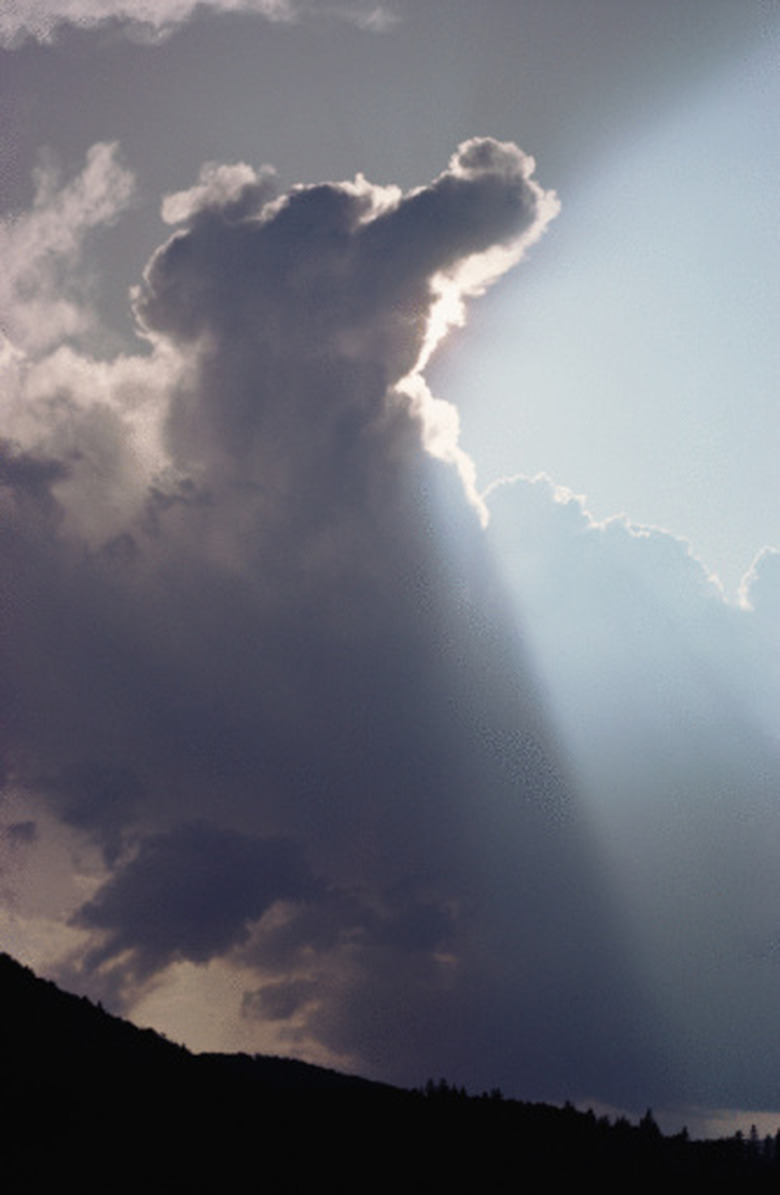What Are Rain Clouds?
Clouds can be found in any atmospheric layer, as long as there is enough moisture for condensation. There are three main groups of clouds: lower, middle and high level clouds. Clouds are responsible for all types of precipitation, including snow, hail and rain. Under special circumstances, clouds can create hurricanes, tornadoes and severe storms.
Composition
Composition
Clouds are composed of tiny water droplets and can also include other particles in air, such as smoke, dust or dirt. These particles are suspended in the air and are subject to all types of atmospheric conditions, which can cause them to condense, disperse or freeze. The water droplets in clouds are very small and spaced far apart, making air the main component of clouds. The distortion of sunlight by water particles allows the clouds to be visible. Water takes form as a solid, liquid or vapor in clouds.
Formation
Formation
The condensation of water vapor into tiny droplets forms clouds. The water vapor in warm, rising air cools, and the water molecules begin to clump together, forming tiny droplets. The droplets either continue to combine with others, forming rain droplets, or evaporate back into water vapor. In colder conditions, the water droplets may turn into ice crystals. The formation of clouds is largely affected by the surrounding environment and can result in many different classifications of clouds.
Precipitation
Precipitation
If water molecules in a cloud combine into a droplet that is too heavy to be suspended in air, then it falls to the ground as precipitation. A rain cloud occurs when atmospheric conditions cause water molecules to rapidly combine, producing large amounts of precipitation. Hail, snow and freezing rain occur when the water droplet freezes in the atmosphere before falling to earth. Other particles found in clouds can become part of the precipitate; for example, atmospheric pollution causes some clouds to rain water that contains harmful chemicals.
Cloud Types
Cloud Types
Although all clouds can form rain under the right circumstances, many are too distant for this precipitation to reach earth. Two types of clouds that are commonly responsible for precipitation are cumulonimbus and nimbostratus clouds. Cumulonimbus clouds create heavy downpours and are common in tropical and temperate regions. Nimbostratus clouds are thick and can be responsible for snow, ice or rain. These clouds produce moderate to heavy precipitation for prolonged periods.
Cite This Article
MLA
Land, Mitchell. "What Are Rain Clouds?" sciencing.com, https://www.sciencing.com/rain-clouds-8362108/. 22 November 2019.
APA
Land, Mitchell. (2019, November 22). What Are Rain Clouds?. sciencing.com. Retrieved from https://www.sciencing.com/rain-clouds-8362108/
Chicago
Land, Mitchell. What Are Rain Clouds? last modified March 24, 2022. https://www.sciencing.com/rain-clouds-8362108/
